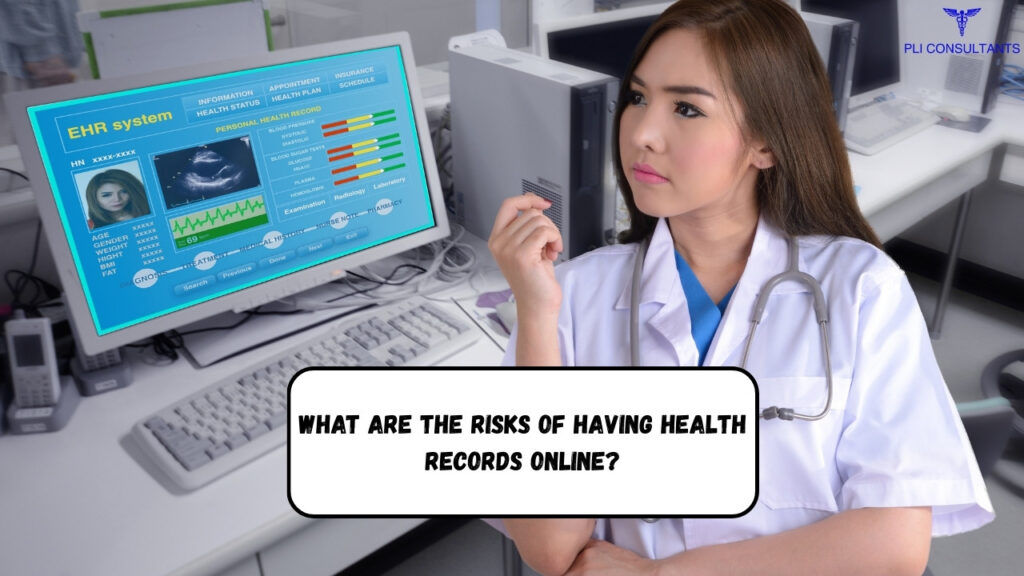Electronic Health Records (EHRs) have revolutionized healthcare delivery, promising improved patient care, increased efficiency, and better communication among providers. However, this digital transformation has introduced new complexities in medical malpractice litigation.
This article explores the dual nature of EHRs in malpractice claims and offers evidence-based strategies to mitigate associated risks. It also highlights how medical malpractice insurance can provide crucial support in managing these risks.
EHRs: A Double-Edged Sword in Medical Malpractice Claims
Advantages of EHRs
Comprehensive Documentation
EHRs offer a detailed, chronological record of a patient’s medical history, diagnoses, treatments, medications, and test results. This comprehensive data can be invaluable in defending against unfounded malpractice claims.
In the event of a claim, insurance providers can use EHR data to build a robust defense, demonstrating the accuracy and timeliness of documentation to refute allegations.
Real-Time Updates
EHRs enable accurate and immediate documentation, reducing errors and omissions that could lead to allegations.
Proper documentation can enhance the defense in malpractice suits, potentially leading to better outcomes in litigation and affecting malpractice insurance premiums and coverage options.
Enhanced Communication
EHRs facilitate better communication among providers, reducing the potential for miscommunication and medical errors.
Improved communication can lead to fewer errors and claims, which can positively influence the healthcare provider’s claims history and minimize the rise in malpractice insurance premiums.
![]()
Potential Liabilities
Data Entry and User-Related Errors
Incorrect or incomplete data entry can lead to misdiagnosis, inappropriate treatment, and adverse events, potentially forming the basis of a malpractice claim. Malpractice insurance can cover claims arising from data entry errors, offering financial protection and support in managing such claims.
System Design Flaws
Poorly designed EHR systems can hinder workflow, create alert fatigue, or obscure critical information, leading to errors. Ensuring that EHR systems are well-designed and integrated can reduce the likelihood of claims, potentially leading to lower premiums and better coverage options.
Data Security and Privacy Issues
Unauthorized access to patient information and data breaches can damage a healthcare provider’s reputation and result in legal liability.
Cybersecurity and data breach coverage within malpractice insurance policies can protect against financial losses and legal consequences related to data breaches.
“Copy and Paste” Errors
The ease of copying and pasting information within EHRs can lead to inaccurate or misleading documentation, creating liability risks.
Medical malpractice insurance can provide support for claims arising from documentation errors, helping to manage the financial impact of such issues.
Specialties Most at Risk for EHR-Related Claims
Understanding which medical specialties are most vulnerable to EHR-related malpractice claims is crucial for targeted risk management. According to data from The Doctors Company, the following specialties have the highest percentage of claims where EHRs are a factor:
| Specialty | Percentage of EHR-Related Claims |
| Family Medicine | 8% |
| Internal Medicine | 8% |
| Cardiology | 6% |
| Radiology | 6% |
| Obstetrics | 5% |
| Orthopedics | 5% |
| Nursing | 5% |
| Hospital Medicine | 4% |
| Gynecology | 4% |
| Emergency Medicine | 3% |
| Anesthesiology | 3% |
| Plastic Surgery | 3% |
| Urology | 3% |
| General Surgery | 3% |
Implications
- High-Risk Specialties: Primary care providers, such as those in Family Medicine and Internal Medicine, face higher risks and should be vigilant in their EHR practices.
- Specialty-Specific Training: Targeted EHR training and risk management strategies tailored to each specialty can help mitigate risks and improve patient safety.
Key Findings from Medical Malpractice Claims Analysis:
A study of the CRICO claims database revealed:
- Less than 1% of cases involved health IT-related issues.
- Most cases occurred in ambulatory care settings (146 out of 248).
- Common error types: medications (31%), diagnosis (28%), and treatment complications (31%).
- Over 80% of cases involved moderate to severe harm.

Strategies to Mitigate EHR-Related Risks:
Prioritize Data Accuracy and Completeness
- Protocols: Implement protocols to ensure accurate, up-to-date EHR data.
- Insurance Benefit: Accurate records can help in defending against claims and potentially influence insurance costs.
Enhance Cybersecurity Measures:
- Security Systems: Invest in robust systems to protect patient data, including multi-factor authentication and encryption.
- Insurance Coverage: Cybersecurity insurance can help cover costs related to data breaches and security failures.
Provide Comprehensive Training
- Staff Education: Train staff on proper EHR usage and documentation best practices.
- Insurance Impact: Well-trained staff can reduce errors and claims, potentially affecting malpractice insurance premiums.
Conduct Regular Audits and Reviews
- Systematic Reviews: Implement systematic reviews of EHR data to identify and rectify errors.
- Insurance Benefits: Regular audits can help in maintaining accurate records and managing claims more effectively.
Improve EHR Design and Integration
- User-Centered Design: Focus on designing EHR systems that enhance usability and reduce errors.
- Insurance Considerations: Well-integrated systems can minimize errors and claims, potentially leading to more favorable insurance terms.
Address Socio-Technical Factors
- Comprehensive Approach: Consider all dimensions of health IT implementation, including organizational culture and policies.
Electronic Health Records (EHRs) have transformed healthcare, offering significant benefits in patient care, efficiency, and provider communication. However, they also present complex challenges in medical malpractice. The CRICO study highlights that while EHR-related issues are rare, they often result in severe harm, underscoring the need for effective risk management.
Healthcare providers must adopt a multifaceted strategy to navigate these complexities, including robust data accuracy measures, specialized training, regular audits, user-centered EHR design, and addressing broader socio-technical factors.
Additionally, comprehensive medical malpractice insurance can provide crucial support in managing these risks, covering potential claims and protecting against financial losses. By embracing these strategies and leveraging insurance support, healthcare organizations can harness the full potential of EHRs while mitigating associated risks, ultimately enhancing patient care and safety.










